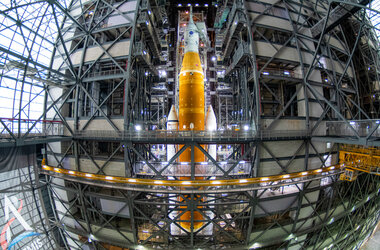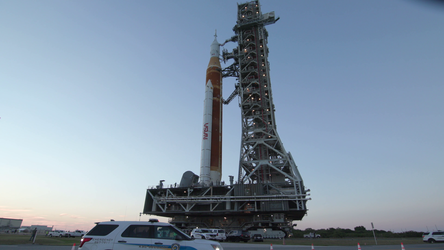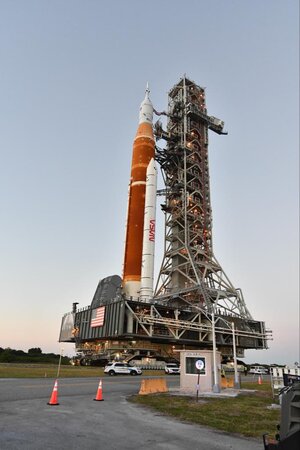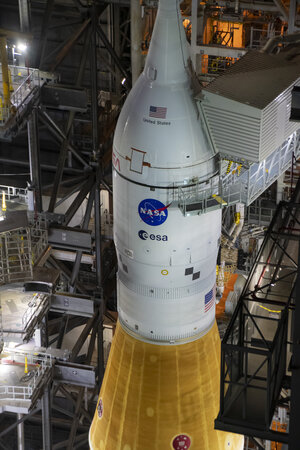
Rolling Moon rocket to the Vehicle Assembly Building
On 25 April the Artemis Moon rocket was rolled from launchpad 39B at NASA’s Kennedy Space Center in Florida, USA, to the Vehicle Assembly Building.
This timelapse video of NASA’s mega-Moon rocket with Orion and the European Service Module inside shows the transport from the launchpad.
While the rocket will propel Orion to supersonic speeds, the rocket itself is moved slowly but securely to the launchpad. These scenes have been sped up on average 20 times faster than actual speeds, with the shots of at the end 50 times faster. Traveling at a maximum speed of just 1.3 km/h, the 6.5-km voyage is a careful process.
The ten-hour journey was completed on 26 April and the Space Launch System teams then worked on replacing a faulty upper stage check valve and a small leak within the tail service mast umbilical ground plate housing, and perform additional checkouts before returning to the launch pad for the next wet dress rehearsal attempt.
At 100 m tall, the SLS rocket is roughly the height of the Elizabeth Tower (Big Ben) in London, UK, or 16 giraffes stacked on top of each other. If you laid the rocket on the ground, it would take over a minute to walk from the engines to the tip of the launch abort system.






